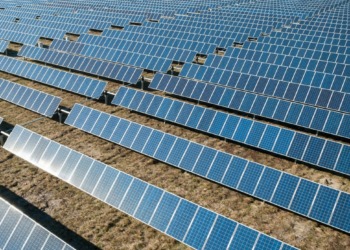Air travel has long been seen as a problem in the fight against climate change. According to an “Our World in Data” report, air travel is the source of 2.5% of all man-made carbon dioxide emissions. Now, 2.5% may not seem like much. But the issue is not just the emissions themselves, but the large amounts of fuel used — especially when taking off, spewing all those gases on the nearby towns. This is set to become even more problematic as more people are flying more often.
To solve this issue, industry experts have looked to the electric battery power revolution that is being used to transform the automobile industry.
Can airplanes use battery technology?
Using battery technology to electrify flights would eliminate this problem — so why has it not been done already?
The answer lies in two issues with the lithium-ion battery technology currently in use.
The first is the issue of flammability. Standard lithium-ion batteries can overheat and catch fire — the reason you cannot store a laptop or mobile phone in your hold luggage.
The second is that most batteries are simply not powerful enough to power large commercial aircraft — it is a question of battery density. This term refers to the amount of energy a battery contains compared to its weight or size. Simply put, to lift off a plane requires a huge amount of energy — hence a lot of heavy batteries.
However, there is a new possibility: Solid-state batteries.
So what is a solid-state battery?
Solid-state batteries function much like standard lithium–ion batteries except that they replace the flammable liquid electrolyte in a traditional lithium-ion battery with a solid electrolyte that serves the same function.
A solid electrolyte also drastically increases a battery’s energy density, making them much more powerful, with greater capacity.
In short, solid-state batteries deliver more punch for the same weight and they are not dangerous, they don’t catch fire the way lithium-ion batteries do.
NASA is currently working on developing solid-state battery technology and this is what is drawing the attention of the industry. For some years now, they’ve had a project called Solid-state Architecture Batteries for Enhanced Rechargeability and Safety (SABERS), working on solid-state batteries. Not only do they have the power and efficiency needed to lift a plane, their structure is (obviously) very solid. Even if you kick and damage those batteries, they don’t catch fire.
NASA had five objectives for this project:
- Meet energy density requirements needed to enable electric aircraft.
- Optimize recharge speed for efficient turnaround time.
- Avoid parasitic weight from excess packaging and cooling.
- Increase safety with fully solid design eliminating use of flammable liquids.
- Combine materials technologies to achieve scalability.
These demanding objectives were essentially achieved when a prototype sulphur selenium battery was developed, able to produce 500 watt-hours of energy per kilogram of battery.
And that is amazing: It’s double the energy density of a standard lithium-ion battery.
As a result, solid-state batteries are now seen as the key to solving the issues of safety and energy density required for electric flight. All of a sudden, we have a realistic alternative to the high use of fossil fuels currently powering aircraft.
Speaking of sustainability: Can solid–state batteries be recycled?
Recycling is a major concern for anyone seeking to turn our economic system more sustainable and here is the good news: Solid-state batteries can also be more safely recycled than standard lithium–ion batteries for a very simple reason: They are made of non-flammable components.
Related Articles: Are Lithium Batteries for Electric Vehicles a Threat to the Environment? | Three Companies Making Electric Flights Reality
However, recycling any form of battery is also complex because batteries contain many chemical components that are toxic and difficult to separate. This is a broader issue to be overcome if the aviation industry as a whole is ever to become fully environmentally friendly.
Has the car industry followed suit with EVs using solid-state batteries?
This new battery technology is also leading to a breakthrough in the car industry. And we may expect to soon see solid-state batteries displacing lithium-ion batteries as the better, safer, more efficient alternative. The benefits include reduced charging times, increased capacity, and perhaps most importantly, reduced fire risk associated with lithium-ion batteries.
The Japanese car firm Toyota has announced that it has made a breakthrough with solid-state battery technology and that it plans to roll out production of solid-state battery vehicles by 2025 – two years from now.
Toyota also claims to have developed a better solid–state battery with outstanding performance and energy density — saying that it can power an electric vehicle for up to 745 miles and can charge in only 10 minutes. Compared to the minimum 45 minutes it takes for an EV to charge up even under the best of circumstances (with a supercharger), this is astonishing.
It may only be a short time before this new solid-state battery technology is likewise broadly applied to airplanes, changing air travel forever.
Editor’s Note: The opinions expressed here by the authors are their own, not those of Impakter.com — Featured Photo Credit: Maxim Kovalev.









